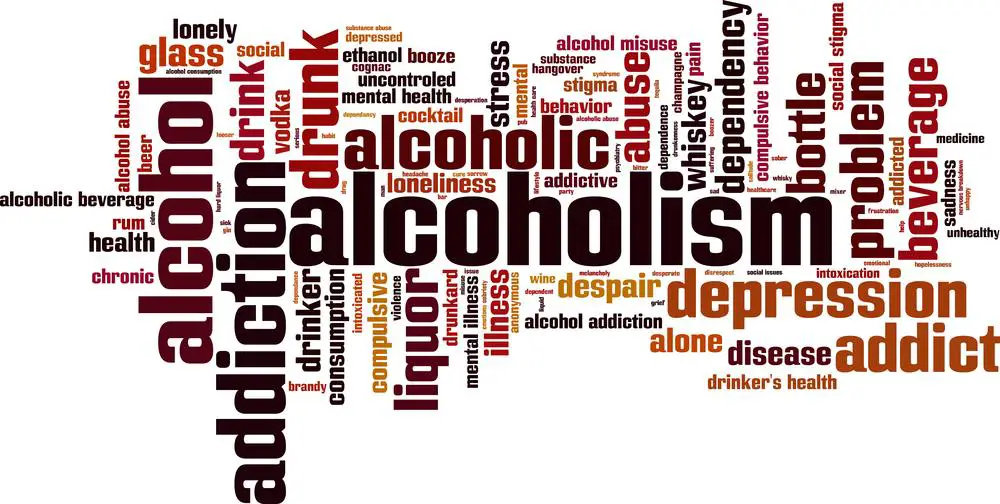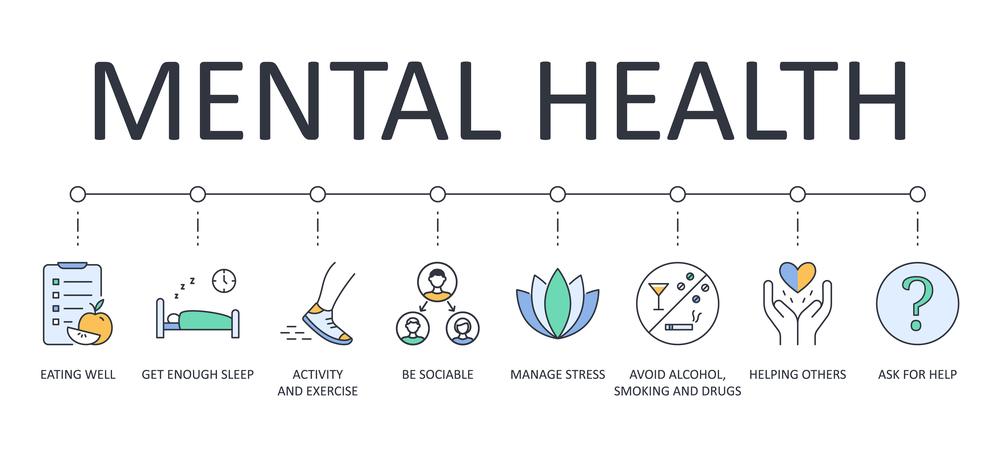Transfer addiction occurs when an individual substitutes a new compulsive behavior for a previous addictive behavior that they have stopped. It typically manifests during or after the recovery process from the initial addiction. The dynamics behind this phenomenon include psychological, emotional, and sometimes physiological factors that contribute to the likelihood of developing a new addiction. This type of addiction serves as a coping mechanism to fill the void left by the substance or behavior to which the individual was originally addicted.
Understanding the signs and symptoms of transfer addiction is critical for those in recovery. It can sneak up unexpectedly, as new addictive behaviors often seem harmless at first, gradually escalating until they become problematic. Recognizing these patterns early can help prevent the harmful impact transfer addiction can have on an individual’s sobriety and overall well-being.
Effective treatment for transfer addiction usually involves a comprehensive approach that addresses the underlying causes of addiction, the development of healthy coping strategies, and the establishment of solid support systems. Addressing lifestyle changes and implementing relapse prevention strategies are also essential components of managing and overcoming transfer addiction.
Key Takeaways
- Transfer addiction is a substitution of compulsive behaviors that can occur during recovery.
- Early recognition of the signs and symptoms is vital for maintaining sobriety.
- Treatment involves addressing underlying causes, lifestyle changes, and strong support systems.
Understanding Transfer Addiction
 When you start to control one addictive behavior, another might take its place. This switch is what’s known as transfer addiction. Let’s uncover how this occurs and its underlying science.
When you start to control one addictive behavior, another might take its place. This switch is what’s known as transfer addiction. Let’s uncover how this occurs and its underlying science.
Defining Transfer Addiction
Transfer addiction happens when you conquer one addiction only to find yourself grappling with another. It might sneak up on you, replacing your old habits with new ones that cause similar neurochemical reactions in your brain. Here’s a clearer picture:
- Old vs. New: You might stop drinking alcohol but start excessive shopping.
- Pattern Recognition: Watch for patterns that mimic your previous addictive behaviors.
This switch is a sign that the root cause of your addiction hasn’t been fully addressed. The key takeaway? Recognizing the change in addictive behavior is crucial to comprehensive recovery.
The Science Behind Addiction Transfer
Addiction is deeply rooted in your brain’s reward system. Dopamine, a neurotransmitter, plays a starring role in this process. It gives you a “reward” feeling when engaging in activities you enjoy but can lead to addiction when the behavior is unhealthy. Here’s what happens inside your brain:
- Dopamine Surge: Engaging in an addictive behavior spikes dopamine levels, reinforcing the behavior.
- The Brain’s Role: The addiction brain changes with each habit, creating a cycle that’s tough to break.
Your brain becomes hardwired to seek the pleasurable dopamine release, prompting you to substitute one addictive behavior for another. Your takeaway? Understanding your brain’s role in addiction is vital to preventing or overcoming transfer addiction.
Risk Factors and Causes
Transfer addiction can sneak up on you when you’re busy fighting another addiction, as it’s often a complex interplay of genetics, psychology, and environment.
Genetic Predisposition
Your genes might be partly to blame for transfer addictions. They can set the stage by influencing how your brain rewards you for certain behaviors. If addiction runs in your family, you could have a higher risk of developing an addiction yourself, suggesting that genetics play a role in your susceptibility.
- Heritability: Studies estimate that genetics account for about 40-60% of the risk of developing an addiction.
- Family History: A close family member with an addiction can mean you’re more likely to develop one, too.
Your genes might be partly to blame for transfer addictions. They can set the stage by influencing how your brain rewards you for certain behaviors. If addiction runs in your family, you could have a higher risk of developing an addiction yourself, suggesting that genetics play a role in your susceptibility. Thus, do not wait longer; enroll today for addiction counseling and treatment.
Key Takeaway: A genetic predisposition doesn’t seal your fate but means you should be extra vigilant.
Underlying Psychological Issues
 Addiction isn’t just about physical cravings; it’s deeply rooted in your mental health. Issues like stress, depression, and trauma can fuel a need for escapism, which might manifest as a transfer addiction.
Addiction isn’t just about physical cravings; it’s deeply rooted in your mental health. Issues like stress, depression, and trauma can fuel a need for escapism, which might manifest as a transfer addiction.
- Mental Health Disorders: Conditions such as anxiety or depression might co-exist with addictions, exacerbating the risk.
- Coping Mechanisms: Sometimes, addictions arise as a flawed strategy to handle emotional pain or stress.
Key Takeaway: Tackling underlying psychological issues can diminish the risk of a transfer addiction developing.
Environment and Relationships
Your surroundings and social circle have considerable influence. A stressful home environment, exposure to substance use, or a lack of healthy relationships can all contribute to the development of addiction.
- Social Environment: Positive social interactions can deter addiction, while negative ones can incite it.
- Traumatic Experiences: Traumatic events, especially during childhood, significantly increase the risk of various addictions.
Key Takeaway: Cultivating a supportive environment and healthy relationships can defend against transfer addiction.
Common Types of Transfer Addictions
When one compulsive behavior is swapped for another, transfer addictions occur. Exploring this transition is critical to understanding and managing addictive behaviors.
Substance-Related and Behavioral Addictions

Substance-related addictions involve substances like alcohol or drugs, where dependency can develop. Behavioral addictions, however, do not involve substance intake but activities such as gambling, sex, eating, shopping, gaming, or exercise. Here’s a brief look at how these can manifest:
- Alcohol: Escaping to alcohol after quitting a drug habit showcases dependency transfer.
- Drugs: A substitute for a previously abandoned addictive behavior, possibly due to its relatively easy access.
- Eating Disorders: Sometimes, the fixation of controlling substance intake transfers to food.
- Shopping: The temporary relief from shopping can replace the ‘high’ from substances.
Key takeaway: Recognizing the signs of both substance-related and behavioral addictions is crucial for timely intervention and prevention of further complications.
From Substance Abuse to Behavioral Addictions
Transitioning from substance abuse to a behavioral addiction is not uncommon. Let’s put this into perspective:
- Sex Addiction: May emerge as a new compulsive behavior when drugs or alcohol are ceased, often as a way to fill a void or cope with unresolved issues.
- Gambling: The thrill and dopamine released from gambling can mimic that of drug use, making it an enticing substitute.
- Gaming: Immersive and rewarding, gaming can become a refuge for someone distancing from substance abuse.
Key takeaway: You’re not alone if you find yourself gravitating from substance abuse to a new, obsessive behavior. This transition is a known pathway, and awareness of it is the first step to seeking help.
Cross Addiction Scenarios
Cross addiction happens when you switch from one addictive behavior to another. Below are some scenarios to illustrate this concept:
- Exercise: While healthy in moderation, it can become compulsive, taking over the role of a previous addiction.
- Shopping and Gambling: A person might shift from the high of drug addiction to the adrenaline rush of winning a bet or making a purchase.
Key takeaway: Being vigilant about your habits can help identify a potential cross-addiction early. Recognizing these scenarios encourages proactive steps toward healthier coping mechanisms.
Signs and Symptoms of Transfer Addiction
Recognizing transfer addiction involves being alert to changes in physical, emotional, and behavioral patterns that mirror previous addictive behaviors.
Physical and Emotional Indicators
Physical and emotional signs are the first hints that you might be experiencing transfer addiction. Your body and mind respond to the new addictive behavior much like they did to the previous one.
- Increased anxiety or irritability: If you find yourself on edge more often, consider if it’s in response to a new habit.
- Mood swings: Sudden changes in your mood might indicate underlying compulsive behavior.
- Sleep disturbances: Difficulty sleeping or altered sleep patterns can be a sign of emerging addiction issues.
- Changes in appearance: Neglecting personal grooming or significant weight changes could signal a loss of control.
Pay close attention to how you’re feeling daily, and note any abrupt emotional shifts or physical changes.
Behavioral Changes
Behavioral changes are telltale signs that you may be dealing with transfer addiction. Keep an eye out for the following indicators:
- Obsession with new activity: It could be a sign of compulsive behavior if you’re thinking about a new activity non-stop.
- Neglecting responsibilities: When essential tasks are put aside for a new activity, it might be a coping mechanism that’s spiraling into addiction.
- Secrecy about activities: Hiding your involvement in a new activity from friends and family is a common sign of addiction.
- Financial issues: Spending large amounts of money or facing financial strain due to a new interest could indicate loss of control.
Remember, behaviors that disrupt your daily life or lead to negative consequences warrant your attention. Changing how you cope with stress or difficult emotions is key in addressing transfer addiction.
Key Takeaway: Stay vigilant for shifts in your physical and emotional state, and be mindful of any behavioral pattern changes, as these can be signals of transfer addiction taking hold.
Impact on Recovery and Sobriety
In addressing transfer addiction, its impact on recovery and sobriety cannot be underestimated. Transfer addiction can significantly complicate the path to long-term recovery, making awareness and proactive management critical.
Challenges in Addiction Recovery
- Recognition and Awareness: You may not immediately recognize transfer addiction, as it can manifest in behaviors typically deemed socially acceptable, such as exercise or work. It’s crucial to understand that these, too, can interfere with your sobriety.
- Integrated Treatment: Combating transfer addiction requires a holistic approach to therapy that addresses both the substance use and any emerging addictive behaviors. It ensures that while you’re healing in one area, another disorder isn’t taking root.
- Personal Responsibility: Acknowledge personal responsibility in your recovery journey. It’s a key step in managing potential transfer behaviors before they escalate beyond control.
Key Takeaway: Staying vigilant and embracing a comprehensive treatment approach is essential in avoiding the pitfalls of transfer addiction in recovery.
Relapse Prevention and Management
- Relapse Risk: Transfer addiction increases the risk of relapse as it can be a sign that underlying issues are not fully addressed. It’s your alert system that requires attention.
- Coping Strategies:
- Develop healthy coping mechanisms such as mindfulness or creative outlets.
- Engage in regular physical activity within a balanced lifestyle.
- Support is Vital: Leverage support groups and therapy sessions as a sounding board for your struggles and a platform for accountability. They can offer insight and strategies for preventing relapse.
- Ongoing Assessment: Continuous self-assessment helps you stay on track. If you notice signs of transfer addiction, reach out to a professional for help.
Key Takeaway: Put in place robust coping strategies and utilize support networks to lower the risk of relapse and promote sustained sobriety.
Treatment Approaches for Transfer Addiction
Transfer addiction can be challenging, but with the right treatment plan, you can find balance and recovery. There are diverse approaches tailored to help you manage this condition effectively.
Individual and Group Therapy Options
Individual therapy allows you a private space to work through your feelings, behaviors, and triggers. Highly trained counselors will work with you one-on-one, employing various techniques such as cognitive-behavioral therapy (CBT) which helps in identifying and altering negative thought patterns.
- Counseling: Personalized sessions to address the unique aspects of your addiction.
- CBT: Techniques to reshape your thinking and behavior.
Group therapy offers a communal environment where you can share experiences and support each other under professional guidance. Sessions often focus on:
- Shared experiences: Understanding you’re not alone in your struggles.
- Peer support: Building a network to enable recovery.
Key takeaway: A two-pronged therapy approach can provide both personalized strategies and communal support to tackle transfer addiction effectively.
Medication and Holistic Treatments
In some cases, medication may be used to manage underlying issues or withdrawal symptoms. Your healthcare team will assess if this is right for you and monitor your treatment closely.
- Medication: Administered under medical supervision when necessary.
Holistic treatments are also an essential part of the healing process. Activities like yoga and meditation can enhance your well-being and help maintain long-term recovery by fostering inner peace and resilience.
- Yoga: Enhances physical strength and mental focus.
- Meditation: Aids in stress reduction and emotional regulation.
Key takeaway: Pairing medication with holistic practices offers a comprehensive approach to treating transfer addiction, addressing both physical and psychological needs.
The Role of Support Systems
When you’re grappling with transfer addiction, the people around you can be your strongest allies. Let’s explore how family, friends, and various community support structures can be pivotal in your journey to recovery.
Family and Friends
Your family and friends form the foundation of your personal support network. They are often your first responders in times of need and can play a variety of roles, such as:
- Motivators: Encouragement from loved ones can keep you focused on recovery goals.
- Accountability Partners: They can help you stay on track with your recovery plan.
- Emotional Anchors: Loved ones provide comfort and a sense of security during tough times.
Key Takeaway: With their close connection to you, family and friends are invaluable in providing personalized support that can make a significant difference in addiction recovery.
Community and Support Groups
Broader than immediate personal relationships, community-based support groups and professional counselors specialize in helping individuals navigate the complexities of addiction recovery.
- Support Groups: These allow you to connect with others who understand your struggle, offering communal strength and wisdom.
- Examples include 12-step programs or addiction recovery groups, which often meet regularly.
- Addiction Specialists and Counselors: Professionals who are equipped to offer:
- Tailored strategies to manage and overcome addictive behaviors.
- Tools for managing stressors and triggers that may lead to transfer addiction.
Key Takeaway: Community and support groups and guidance from addiction specialists and counselors can provide you with a supportive network and vital resources needed for long-term recovery.
Lifestyle Changes and Coping Skills
 To successfully navigate away from transfer addiction, it’s crucial to develop new, healthy routines and learn techniques that can help manage stress and emotions.
To successfully navigate away from transfer addiction, it’s crucial to develop new, healthy routines and learn techniques that can help manage stress and emotions.
Building Healthy Habits
Building a foundation of healthy habits is essential in preventing transfer addiction. Here’s how you can start:
- Diet: Prioritize balanced meals with plenty of vegetables, fruits, whole grains, and lean proteins. Aim to eat at regular intervals to maintain balanced blood sugar levels.
- Exercise: Create an exercise routine that you enjoy and can sustain. Even 30 minutes a day of walking, swimming, or yoga can make a significant difference.
- Personal Hygiene: Maintain daily hygiene routines promoting physical and mental health.
Incorporating these habits can provide a sense of routine and normalcy, which is incredibly grounding during times of change.
Mindfulness and Stress Reduction

Engaging in mindfulness and stress-reduction exercises can be highly beneficial. Here’s what you can do:
- Mindfulness Practice: Spend a few minutes daily in meditation or deep-breathing exercises. Apps or community classes can guide you if you’re starting.
- Relaxation Techniques: Taking a warm bath, reading, or listening to music can relax your mind and reduce stress.
Key Takeaway: Regularly engaging in both physical activities and mindfulness practices can significantly aid in managing your stress and reducing the risk of adopting new addictive behaviors.
Prevention Strategies
In tackling transfer addiction, your best allies are knowledge and proactive behavior. Let’s explore how you can stay ahead.
Education and Awareness
To prevent transfer addiction, it’s crucial to understand its nature and risks. Knowing the warning signs can empower you to:
- Recognize unhealthy behavior patterns.
- Identify emotional triggers leading to addiction transfers.
Incorporate this knowledge into your daily life by:
- Attending workshops or seminars focused on addiction issues.
- Reading credible sources that offer insights into behavioral addictions.
Key Takeaway: Education is your first defense—it helps you stay vigilant about your habits and choices.
Early Intervention
When it comes to early intervention, timing is everything. Keep an eye out for these signs in yourself or others:
- A sudden increase in other activities post-addiction recovery.
- Using these activities to cope with stress or negative emotions.
If you spot these, consider:
- Seeking professional help before habits solidify.
- Joining support groups where you can share experiences and strategies.
Key Takeaway: Early intervention can stop transfer addiction in its tracks—be swift and seek support.
Special Considerations in Transfer Addiction
Transfer addiction can catch you by surprise, especially after making significant life changes aimed at improving your health. Let’s address some unique cases where vigilance is critical.
Bariatric Surgery and Eating Behaviors
Bariatric surgery is a life-changing procedure that you might undergo to tackle obesity. However, it’s essential to understand that your relationship with food may change post-surgery:
- Pre-Surgery Overeating: Overeating before bariatric surgery could be indicative of a food addiction. Monitoring these habits is important because they can sometimes shift to another form post-operation.
- Post-Surgery Monitoring: You’ll need to watch your eating behaviors after surgery, as reduced stomach capacity doesn’t necessarily curb addictive tendencies.
Key Takeaway: Stay alert to changes in how you handle food pre-and post-bariatric surgery to prevent transferring an addiction elsewhere.
Dual Diagnosis and Comprehensive Care
When addressing transfer addiction, consider if there’s a dual diagnosis:
- Identify Both Conditions: Recognizing both a substance use disorder and a mental health condition is crucial. Dismissing one can hinder your overall recovery.
- Seek Comprehensive Treatment: A treatment plan that tackles both issues simultaneously is non-negotiable. Integrated care strategies are your best bet for a holistic recovery.
- Strategies for Comprehensive Care:
- Regular consultations with a mental health professional.
- Being open about all your health concerns with your care providers.
- Joining support groups to share experiences and gain insights.
Key Takeaway: To avoid picking up new harmful habits after battling an addiction, make sure you’re getting holistic care that addresses all aspects of your well-being.
Frequently Asked Questions
Exploring the connections between bariatric surgery and addiction, it’s crucial to understand how lifestyle changes can potentially lead to new addictive behaviors. Let’s dive into some common inquiries.
How does bariatric surgery potentially impact addictive behaviors?
Bariatric surgery often leads to significant lifestyle changes, affecting your physical and emotional state. This transition may create vulnerability, potentially increasing the risk of addictive behavior as you might seek alternative ways to cope with stress or emotional discomfort.
Key takeaway: Be mindful of emotional changes post-surgery, as they can influence addictive behaviors.
Are there risks of developing new addictions after weight-loss surgery?
Yes, there are risks. After weight-loss surgery, the shift in your habits and how you relate to food can create a void. This void might lead to the pursuit of other addictions, such as gambling, shopping, or substance abuse, to fill the gap previously occupied by overeating.
Key takeaway: Stay vigilant for shifts in habits that could signal new addictions.
What should individuals be aware of regarding addictive behavior post-operation?
Post-operation, you should be aware of the potential for transfer addiction. Maintaining open communication with healthcare providers and seeking regular psychological support can be critical in identifying and addressing any emerging addictive behaviors early on.
Key takeaway: Regular check-ins with professionals can help nip addictive behaviors in the bud.
What are the common signs of transfer addiction to look out for?
Look out for signs like a sudden increase in alcohol consumption, new or increased engagement in risk-taking activities, or a newfound obsession with exercise or shopping. Any compulsive behavior that starts to interfere with daily life warrants attention.
Key takeaway: Recognize and address compulsive behaviors that disrupt your daily routine.
How can patients safeguard against the risk of transfer addiction following surgery?
Here are a few strategies:
- Maintain a support network of friends, family, and support groups.
- Engage in regular physical activity and hobbies that you enjoy.
- Develop coping mechanisms that don’t involve substances or addictive behaviors.
Key takeaway: A strong support system and healthy coping strategies are your best defense.
What support is available for those dealing with transfer addiction post-gastric bypass?
You’re not alone; support is available in multiple forms:
- Professional counseling
- Support groups specifically for bariatric patients
- Online forums where you can connect with others experiencing similar challenges
Key takeaway: Use the available resources to help manage transfer addiction.
- How to Design a Home Gym That Promotes Mental Well-Being - February 28, 2024
- Can Stress Cause Migraines? Tips To Manage And Prevent Headaches - February 28, 2024
- How To Stop Dizziness From Stress: Techniques For Regaining Balance - February 28, 2024
This site contains affiliate links to products. We will receive a commission for purchases made through these links.




